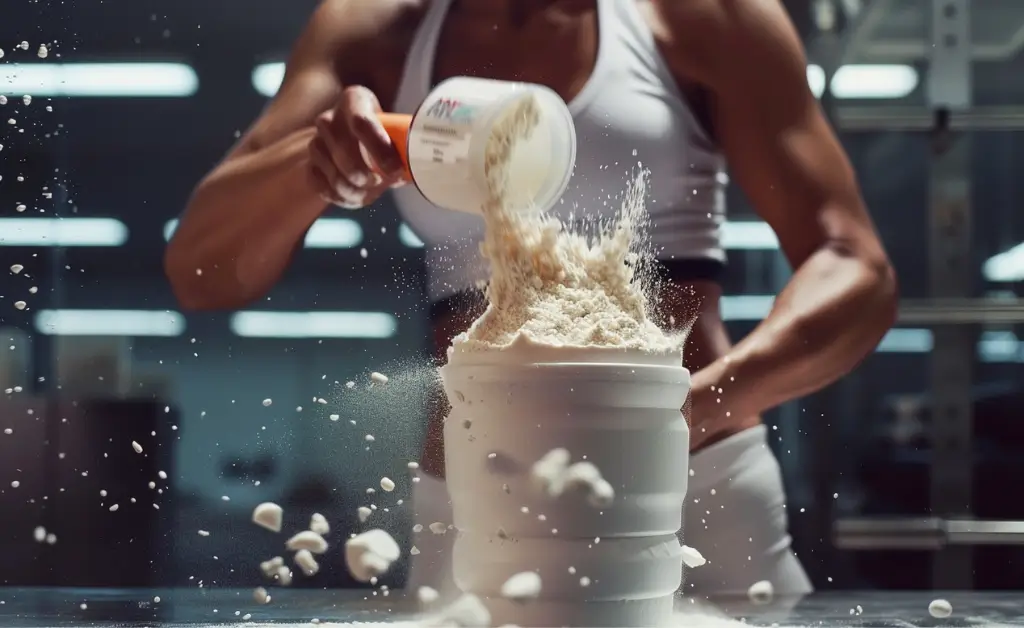Protein powder has become a staple in many fitness enthusiasts’ diets, but have you ever wondered how it’s made? This article breaks down the fascinating process, types of protein powders, quality control measures, and how to ensure you’re choosing a quality product.
Types of Protein for Different Purposes
Protein powders come in various forms, each suited for different dietary needs and fitness goals:
- Whey Protein: Derived from milk, whey protein is famous for muscle building and recovery due to its complete amino acid profile and fast absorption rate.
- Casein Protein: Also from milk, casein digests slower than whey, making it ideal for sustained protein release, such as overnight recovery.
- Soy Protein: A plant-based protein with all essential amino acids, soy is an excellent option for vegetarians and those with lactose intolerance.
- Pea Protein: This plant-based protein is hypoallergenic and easily digestible, making it suitable for those with dietary restrictions.
- Hemp Protein: Known for its omega-3 fatty acids, hemp protein supports overall health and is a good choice for those following a plant-based diet.
- Egg White Protein: Low in fat and carbohydrates, egg white protein is ideal for maintaining a lean physique.
The Manufacturing Process
The production of protein powder involves several meticulous steps, varying slightly depending on the type of protein.
- Sourcing and Preparation:
- Whey and Casein are by-products of cheese making. Milk is pasteurized, and enzymes are added to separate the curds (casein) from the whey.
- Plant-Based Proteins: Sources like soybeans or peas are cleaned, dehulled, and ground into a fine powder.
- Extraction and Concentration:
- Whey Protein: Liquid whey is filtered to remove fats and lactose, resulting in whey protein concentrate. Further processing yields whey protein isolate with higher protein content.
- Casein Protein: Casein is precipitated from milk, washed, and dried into a powder.
- Plant-Based Proteins: Protein is isolated from plants through soaking, grinding, and centrifugation to remove fiber and other non-protein components.
- Drying:
- The protein concentrate or isolate is dried using spray or freeze-drying to create a refined, dry powder.
- Flavoring and Packaging:
- The final step involves adding flavors, sweeteners, and other additives before packaging the protein powder for consumers.
Quality Control Measures
Ensuring the quality and safety of protein powders involves rigorous control measures:
- Raw Material Testing: All ingredients are tested for purity and quality before production begins.
- Process Control: During manufacturing, strict protocols are followed to prevent contamination and ensure consistency.
- Final Product Testing: Finished products are tested for nutritional content, contaminants, and microbiological safety.
- Third-Party Verification: Many manufacturers use third-party testing to validate their quality claims.
Differences in Making Processes for Different Types
The core steps of sourcing, extraction, and drying are similar across protein types, but nuances exist:
- Whey vs. Casein: Whey involves filtration processes to isolate proteins, whereas casein involves precipitation.
- Plant-Based vs. Animal-Based: Plant proteins often require additional steps to remove non-protein components and achieve a fine texture.
- Hydrolyzed Proteins: Some proteins undergo hydrolysis, breaking down into smaller peptides for faster digestion, and are often used in medical or specialized fitness products.
Pros and Cons of Protein Powder
Pros:
- Convenience: Easy to prepare and consume, especially for busy lifestyles.
- High Protein Content: Helps meet daily protein needs, essential for muscle repair and growth.
- Variety: Available in numerous flavors and types to suit dietary preferences and restrictions.
Cons:
- Cost: It can be more expensive than whole-food protein sources.
- Additives: Some powders contain artificial additives and sweeteners.
- Digestive Issues: These may cause bloating or discomfort in sensitive individuals.
How to Check If It’s a Quality Product
- Read the Label: Check for protein content per serving, ingredient list, and presence of unnecessary additives.
- Third-Party Testing: Look for products certified by independent labs like NSF or Informed-Sport.
- Brand Reputation: Choose reputable brands known for quality and transparency.
- Amino Acid Profile: Ensure it has a complete amino acid profile, especially for muscle-building.
- Consumer Reviews: Review reviews and testimonials to gauge effectiveness and potential side effects.

